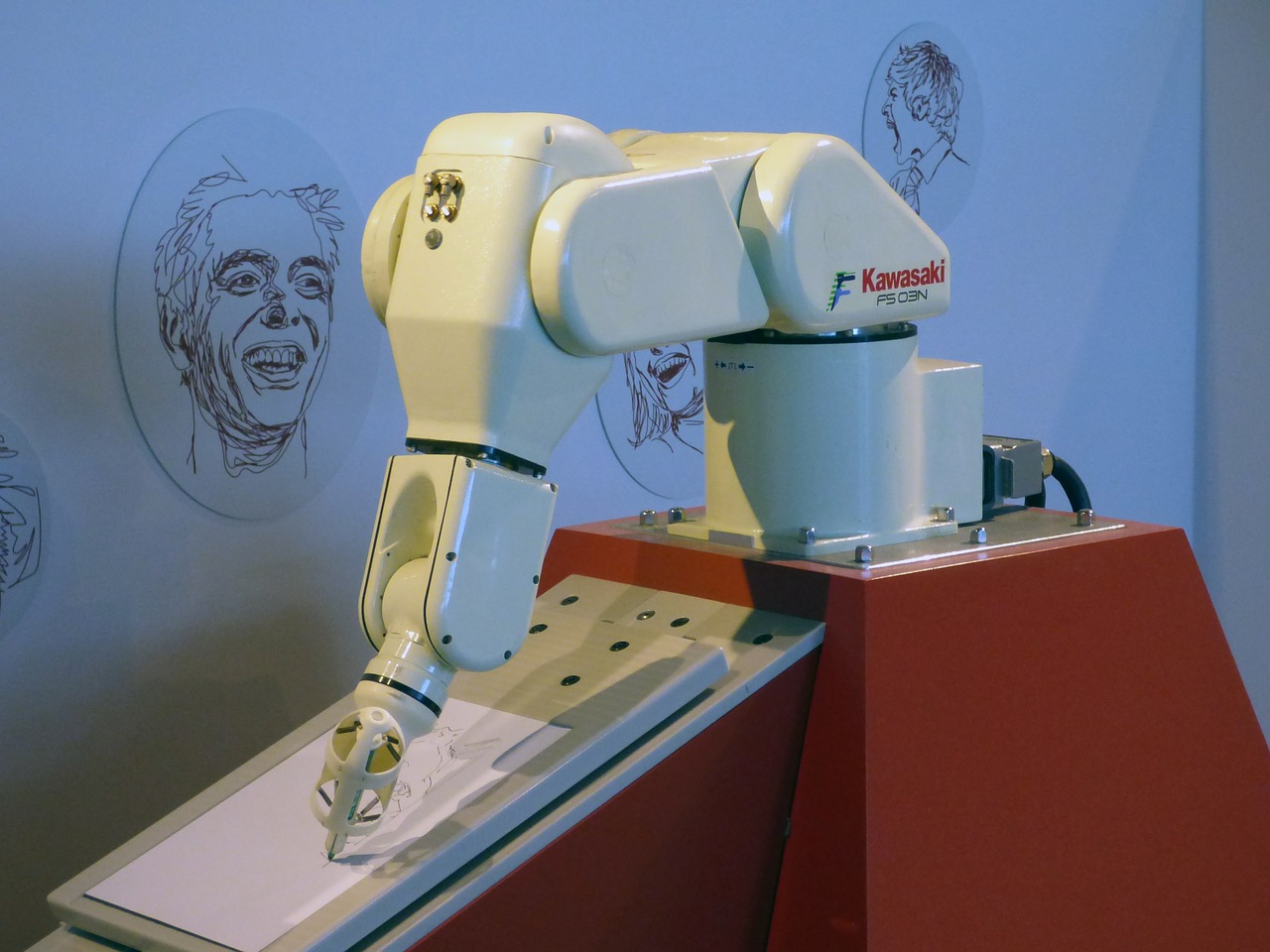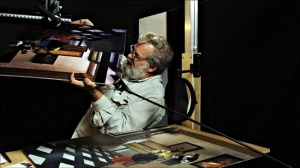Translating deep thinking into common sense
When Science Met Art: The Making of Tim’s Vermeer

By Kaila Geary Halling
October 15, 2014
SUBSCRIBE TO SAVVY STREET (It's Free)
Penn Jillette’s longtime friend, Texas-based inventor, Tim Jenison, flew out to Vegas to distract him. “I’m going crazy here. Talk to me about anything but show business!” Penn is part of the most successful magic act on the Vegas Strip, Penn and Teller. Tim and Penn’s friendship had grown over the years due to their shared interests and lively, intense discussions. “Alright,” Tim said, “What do you know about Johannes Vermeer?”
Well Penn knew roughly what the first couple of paragraphs of Wikipedia had to offer on the famous Dutch master painter. Why was Tim so interested? A successful videographer, entrepreneur, and inventor with interests in philosophy, science, and engineering, Tim was not much into art. Tim told Penn:
Apparently, Tim had a lifelong obsession with the Dutch masters, especially Vermeer. As a student, upon encountering their work, he was stunned by the photo-realism of paintings. It was almost as if a camera had been used. Upon hearing this from Tim, his teacher had been appalled that Tim would try to cheapen the skill of some of the greatest painters who ever lived, by suggesting such an outrageous claim. For Tim, however, this began a life-long obsession with how these masterpieces were created.
One Christmas his daughter presented him with a book, “Vermeer’s Camera” by Professor Phillip Steadman. For years, experts wanted an insight into Vermeer’s technique. How was Vermeer able to capture such precision in detailed, accurate perspective, but without any sharp lines? Professor Steadman had spent over 25 years attempting to prove Vermeer had used 17th century technology with a camera obscura to create his masterpieces. A camera obscura was first described by Leonardo da Vinci, and by the 17th century, optics technology was advancing quickly. Steadman created a small-scale model of Vermeer’s setting from Vermeer’s most famous explicative work, ‘The Art of Painting.’ Professor Steadman was able to perfectly re-create the dimension and perspective of a map from the painting, ‘The Art of Painting’, for authentication. Professor Steadman was left with two questions:
1. Projecting the image onto a surface by use of the obscura camera would give a mirror image. How did the painter overcome that problem?
2. If Vermeer had in fact, used a large room or booth to create the camera instead of a small box, how was he able to accurately recreate colors? He would have been enveloped in low light conditions.
Tim Jenison was intrigued by Professor Steadman’s research and decided to try his own experiment. He was taking a bath one night and examining a nearby large mirror. He mused about how the perspective of the image moved as one’s field of vision changed. So he drew up a design for a room which included the use of two additional mirrors. Not only was he able to solve the problem of perspective, he now had a perfect reflection of the field of the scene projected onto the canvas surface. But it would be his experimenting with a third mirror which would be the most important revelation as to how Vermeer painted so quickly and accurately.
Painting as an Objective Creation
The addition of a third, much smaller mirror, which could be moved back and forth in front of the painter’s face, set at an angle to reflect a portion of the image allowed Tim to perfectly paint each section by blending paint onto the canvas to reflect the view he saw in the mirror. He could easily add or change shading or color as he moved his head or the mirror almost imperceptibly. As the edge of the mirror seemed to “disappear” from what he had just painted, he knew he had achieved a good result. Working like this in small sections, he was able to produce an exact likeness of a photograph of his father-in-law without tracing or outlining. Mistakes were easy to fix by just applying and blending the paint. Tim had only held a paintbrush twice before in his life. It took him less than 6 hours to complete. The finished painting was stunning. Now, how to recreate a Vermeer?
Penn was hooked. The experiment would be huge, adding significant to the historical understanding of how many 17th century painters created their works using cutting-edge technology of the time.
Jenison told Penn, “I was thinking about putting something up on YouTube.” Penn later said this was the first creative disagreement they had over the project.
“You Tube! This needs to be a movie.”
After testing the waters for some Hollywood talent to make the film, they came back to Vegas discouraged. On the one hand, several people they approached wondered if Penn was trying to “punk” them with such a scheme. Those who took Jenison seriously promised the usual format for how documentaries were filmed, which is not that much by way of footage and expensive crews. So Penn and Jenison invited Teller to lunch and picked his brain.
Teller looked at the project from another perspective. The cost of cameras was cheap, it was hiring of the crew that would be expensive. A new idea emerged. What if they set up several cameras at different angles around the studio Tim was working in and just left the cameras rolling for hours while he recreated the painting. Teller would direct the film and they’d just need to bring in editors.
17th century Tech Meets 21st century Tech
As Penn pointed out, this was not going to be your average documentary.
While the task was daunting in the re-creation of the setting, the process of recreating a master’s painting was far more formidable. Jenison had not spent even an hour of his life painting or sketching anything before. How could he possibly even come close to the original Vermeer? Deciding upon a painting to recreate, ‘The Music Lesson,’ mostly due to the self-contained nature of the scene depicted, he set about recreating Vermeer’s studio in a large storage facility. It would take 5 years.
Finally, the cameras began to roll and Tim put his experiment into action. He learnt some interesting things about bringing light into his large-booth camera obscura, and he also realized the painstaking work involved in painting the highly detailed objects and fabrics in the ‘scene.’ The patience involved in recreating a large rug in the painting took over 2 months alone.
The project logged hundreds of hours of footage, surely an overwhelming and daunting task for their editing team. But in fact, the editors loved having all that footage. Shooting schedules for movies are limited to under 30 days in most cases due to costs and teams of skilled people involved in just the making of the movie. As a result, the footage is limited to short shots from maybe two or three cameras. In this case, cameras were rolling the whole time. Tim was painting, creating a huge amount of digital footage for the editors. The ability to see the same action, non-stop from 5 or 6 different angles, allowed the editors to catch every important nuance in action.
Midway through the painting process, Tim travelled to Buckingham Palace to see ‘The Music Lesson’. The beauty and realism of the painting was at once inspiring and hugely daunting. There would be no way for a novice painter like him to get anywhere close to the skill required. He returned to the U.S., filled with doubt, and completely deflated about the project.
Yet, he did accomplish it. There is this great moment in the documentary when the camera captures Tim’s astonished expression when he realizes he is finished with the painting. The painting took one hundred and thirty days. When asked about his tenacity with the project, he replied that if it had been left up to him, he would have halted the project long before. But the cameras were rolling and he just could not disappoint his friends, Penn and Teller.
“Tim’s Vermeer” is a fascinating journey that took several years and uniquely and objectively documents how an experiment progresses from its beginning through to its conclusion. Neither Penn and Teller nor
Tim Jenisen knew what the finale would be. You’ll have to watch the documentary to find out for yourself. Tim’s Vermeer is a documentary film, directed by Teller, produced by his stage partner Penn Jillette and Farley Ziegler, about inventor Tim Jenison’s efforts to duplicate the painting techniques of Johannes Vermeer, in order to test his theory that Vermeer painted with the help of optical devices.








